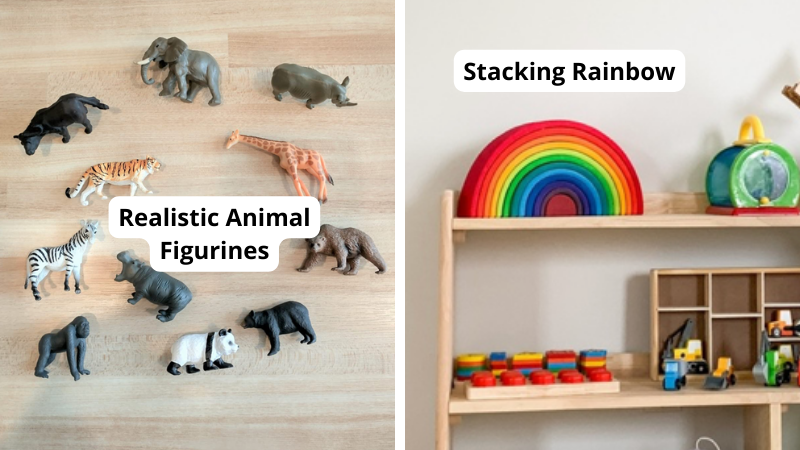The Montessori philosophy is based on hands-on activities and exploration. Maria Montessori believed that children enjoy engaging in purposeful work. For kids, play is work, and toys are the tools that engage them. If you’re outfitting a Montessori school or hands-on classroom or playroom, here is our guide with the top picks for Montessori toys.
What is a Montessori toy?
A Montessori toy encourages kids to experiment, and it should be something that they can use independently and creatively. There is no Montessori label, and lots of different toys can be considered Montessori. For example, wooden blocks, classic LEGO bricks, and other open-ended toys are all considered Montessori toys. On the other hand, specific LEGO sets, such as a Star Wars battle ship set, would not be considered Montessori because they have step-by-step instructions for putting them together. Similarly, you won’t find Montessori toys that include lots of bells and whistles or ones that feature cartoon characters.
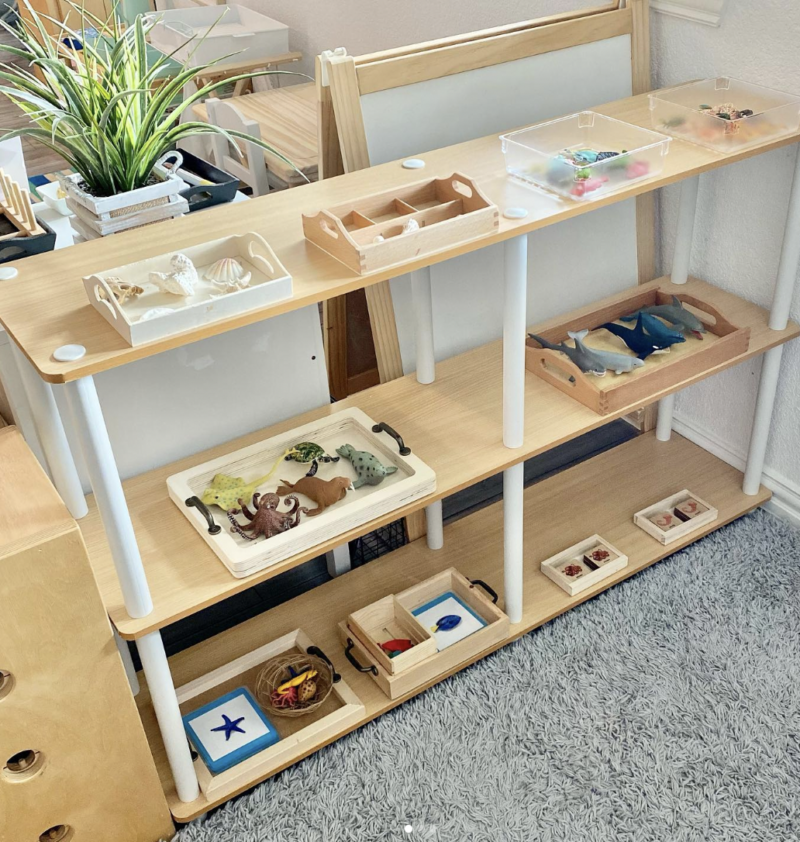
Source: @montessori_with_libbie/Instagram
There are a few guidelines for what makes a Montessori toy:
Focuses on one skill
A Montessori toy focuses on one skill—such as letters, colors, or stacking—at a time, instead of combining them all into one device. Toys that focus on one skill ensure that kids don’t get overwhelmed.
Self-correcting
Montessori toys should be toys that kids can use on their own. And if they aren’t using a toy correctly, the toy will not work. So, for example, they can only insert the puzzle pieces one way. Or they can only fill the number boards with the appropriate number of pegs.
Realistic
It’s not until age 6 that kids can distinguish reality from fantasy, so Montessori toys focus on realism with real images and models. In terms of plastic toys, the more realistic-looking, the better.
Simple
Maria Montessori believed that children learn best through clear, direct information, so Montessori toys don’t have distracting visuals or details. This helps kids develop concentration and order.
Natural
When possible, toys are made of wood, metal, and/or glass in order to connect to the natural world and provide variety in terms of weight, taste, and texture. However, the range of materials that we have now wasn’t around when Maria Montessori was working, so not all modern Montessori toys need to be made from natural materials.
Montessori Toy Guide
Start with these toys as you stock your shelves.
Babies (Ages 0–1)
Wooden Rattles
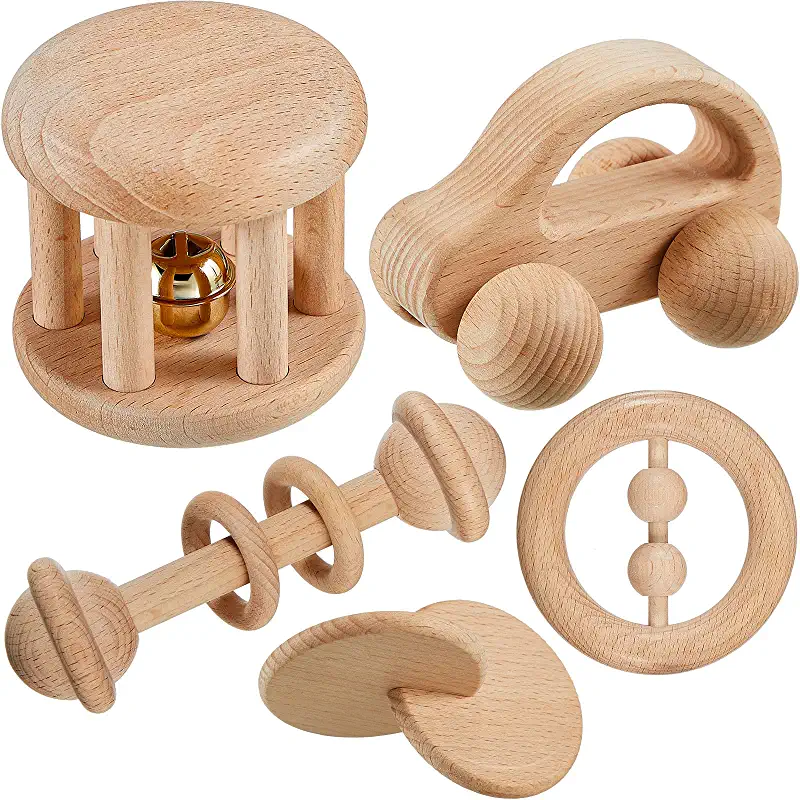
Wooden rattles and toys encourage sensory development with smooth texture, varied weights, and different sounds when babies shake them.
Buy it: Wooden rattles at Amazon
Crinkle Toys
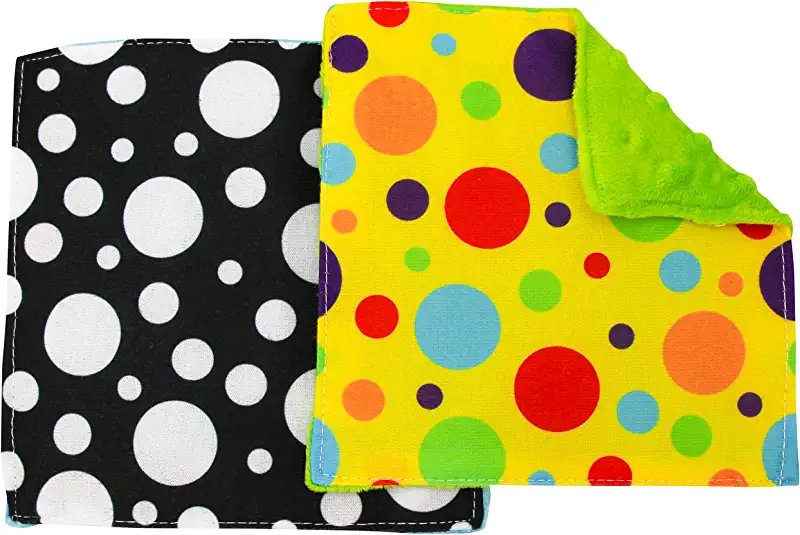
Crinkle toys also encourage sensory development, while black-and-white patterns are great for newborns and young babies.
Buy it: Crinkle toys at Amazon
Textured Balls
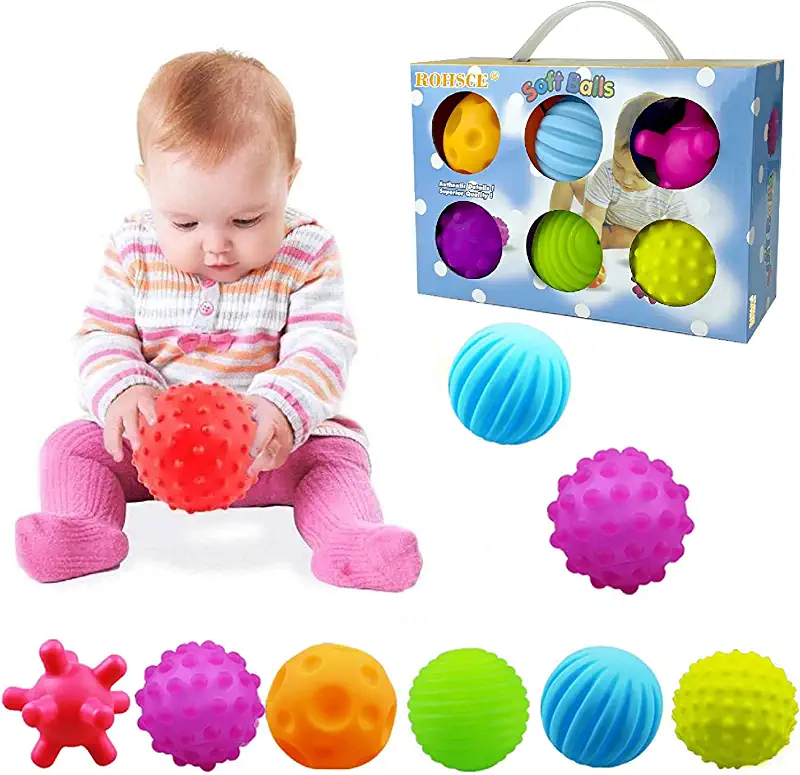
A set of textured balls provides different ways for baby to engage with textures.
Buy it: Texture balls at Amazon
Montessori Play Mat
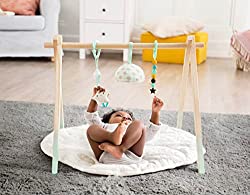
A Montessori play mat will grow with a child, providing different activities when they’re lying down, in tummy time, or sitting up to play.
Buy it: Montessori play mat at Amazon
Musical Instruments
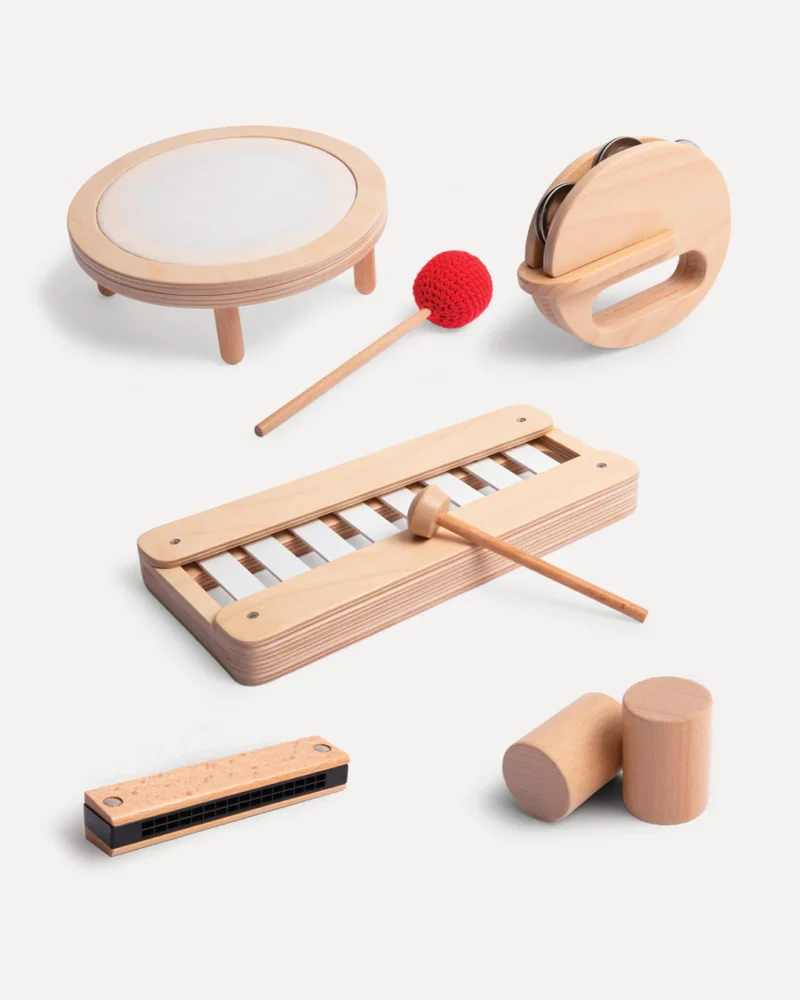
Each musical instrument in this set encourages kids to focus on one sound and one method of making music.
Buy it: Musical instruments at Monti Kids
Mirror Knob Puzzles

This toy combines simple wood puzzles with a peekaboo surprise.
Buy it: Mirror Knob Puzzles at Amazon
Object Permanence Box

This toy is great to introduce as babies start sitting independently. An object permanence box teaches, well, object permanence, as well as fine motor skills and focus.
Buy it: Object Permanence Box at Otteberry’s
Toddlers (Ages 1–3)
Stacking Rainbows
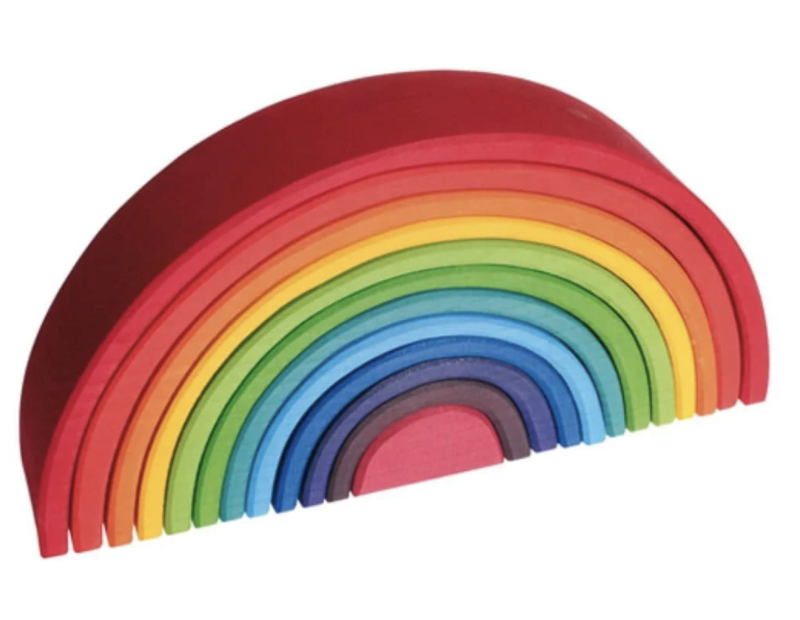
Image: Building With Rainbows
Stacking rainbows are the ultimate open-ended toy. They look simple enough, but you’ll be surprised at what kids create with these curved stackers.
Buy it: Stacking Rainbows at Bella Luna Toys
Wooden Stackers
Image: How We Montessori
In addition to the rainbow stackers, a traditional wooden stacker toy is a great way to engage kids in focus, concentration, and open-ended play.
Buy it: Wooden Stackers at Colored Organics
Practical Life Toys

Maria Montessori believed that children want to have purposeful engagement with work. These child-sized cleaning tools are a great way to encourage it.
Buy it: Toy cleaning tools at Amazon
Knobbed Cylinders

Knobbed cylinders encourage problem-solving, fine motor skills, and matching.
Buy it: Knobbed Cylinders at Amazon
Climbing Triangles

The climber is a must-have for any Montessori play area. Kids develop gross motor skills, including balance. It’s also adjustable, which lets the toy grow with your child.
Buy it: Climbing Triangles at Sprout Kids
Animal Spelling Puzzle

There are lots of different Montessori puzzles. Find a set that has different shapes and sizes so your child builds confidence as they solve each.
Buy it: Animal Spelling Puzzle at Amazon
Push Ball Toy

The push ball toy is another object permanence toy that also encourages persistence.
Buy it: Push Ball Toy at Monti Kids
Realistic Food

Toddlers are continuing to explore what it’s like to do work. Realistic play sets are a way to let them try real work on for size.
Buy it: Realistic play food at Amazon
Preschoolers (Ages 3–5)
Pegboard Set
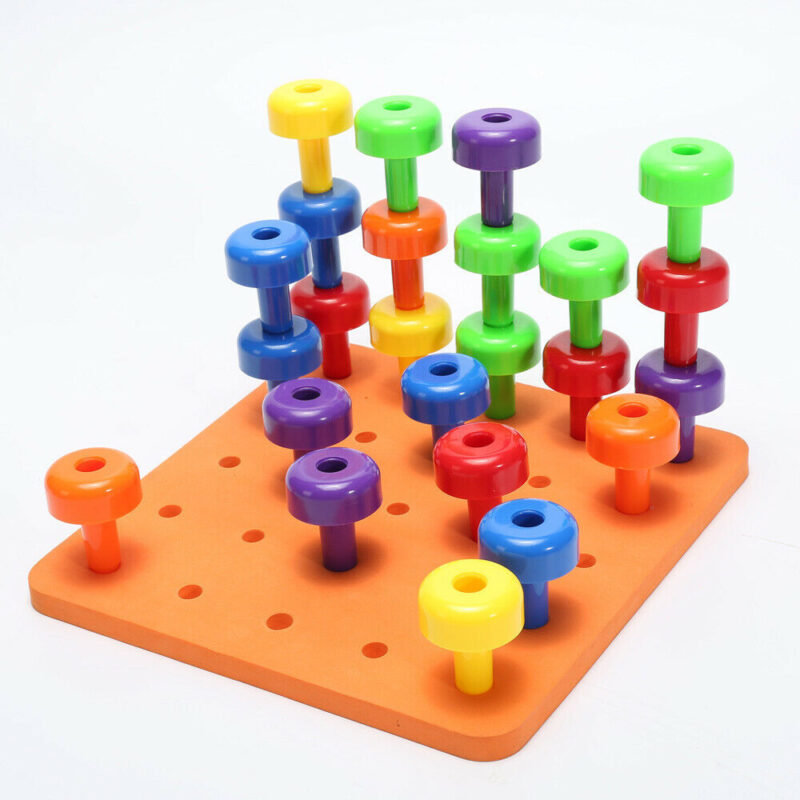
A pegboard set encourages fine motor skills and creativity as kids explore patterns and color matching.
Buy it: Pegboard set at Amazon
Balance Board

Balance boards are another one of those open-ended toys that don’t look like much, but you’ll be surprised at all the ways kids will use them.
Buy it: Balance Board at Wayfair
Blocks

Blocks of all different kinds—traditional blocks, blocks that look like rocks, sensory blocks that have textures—will inspire creativity, planning, and fine motor skills.
Buy it: Montessori Woodwerks Nature Blocks at Fat Brain Toys
Realistic Animal Figurines

As kids’ world expand, provide toys that help them understand and interact with their world, like animal figurines.
Buy it: Realistic figurines at Amazon
Practical Life Toys

Kid-sized versions of the tools that you use every day are good additions to a Montessori playroom.
Buy it: Gardening set at Walmart
Counting Board
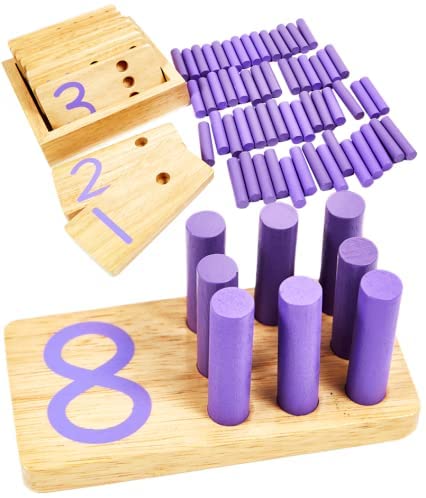
When you want to bring in some academics, a counting board is a good place to start. It encourages one-to-one correspondence, numbers, and quantity.
Buy it: Counting pegboard at Montessori & Me
Plus check out our picks for the best Montessori furniture.
For more articles with practical advice, subscribe to our newsletters to find out when they’re posted!

